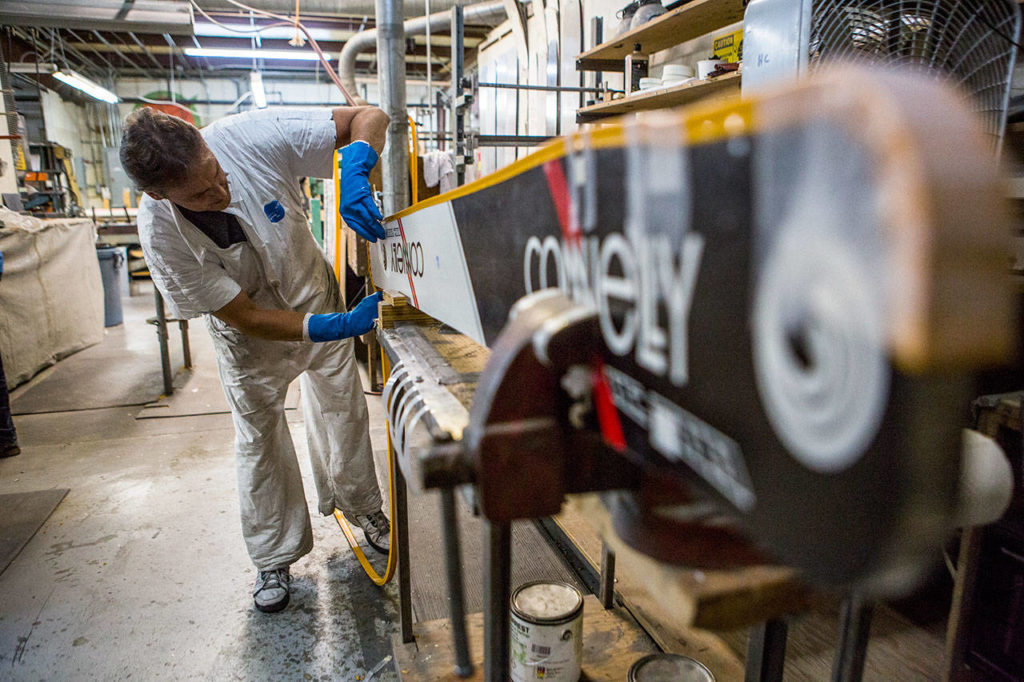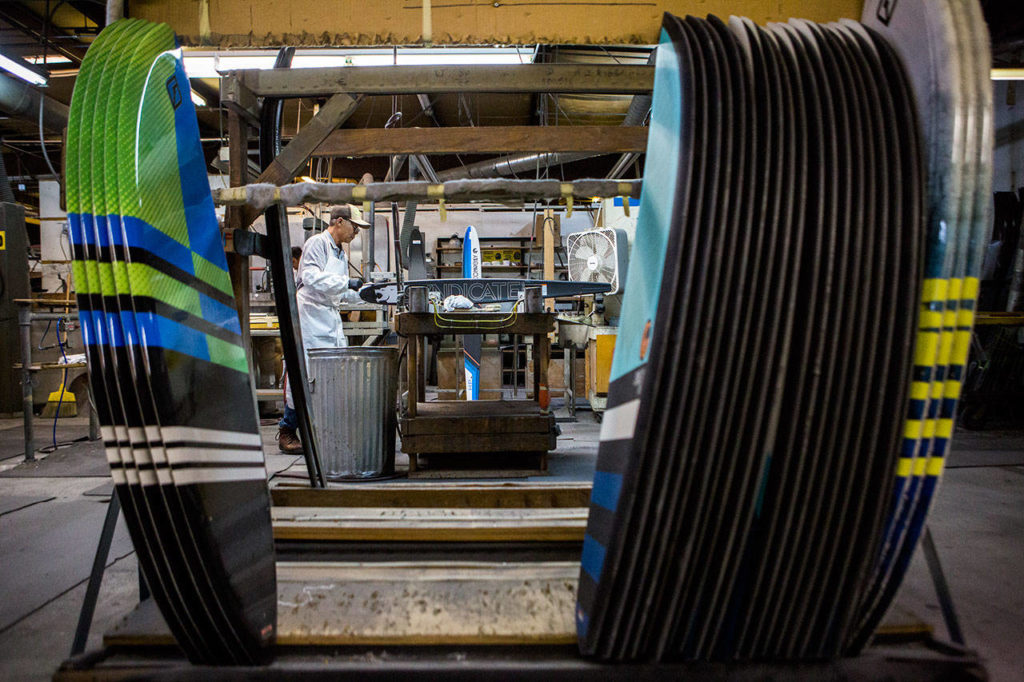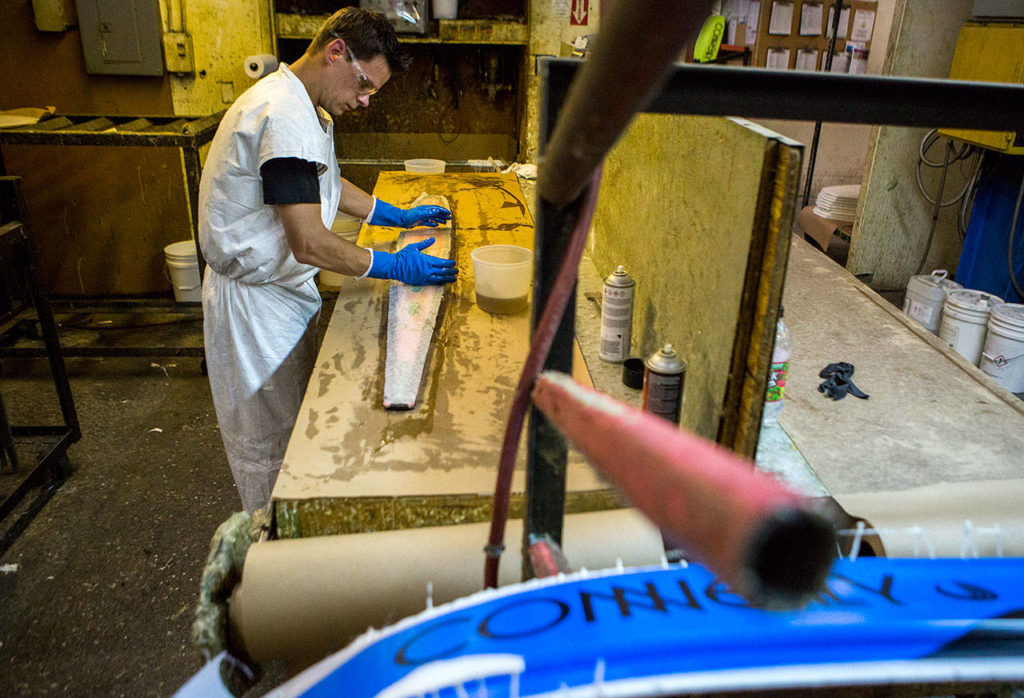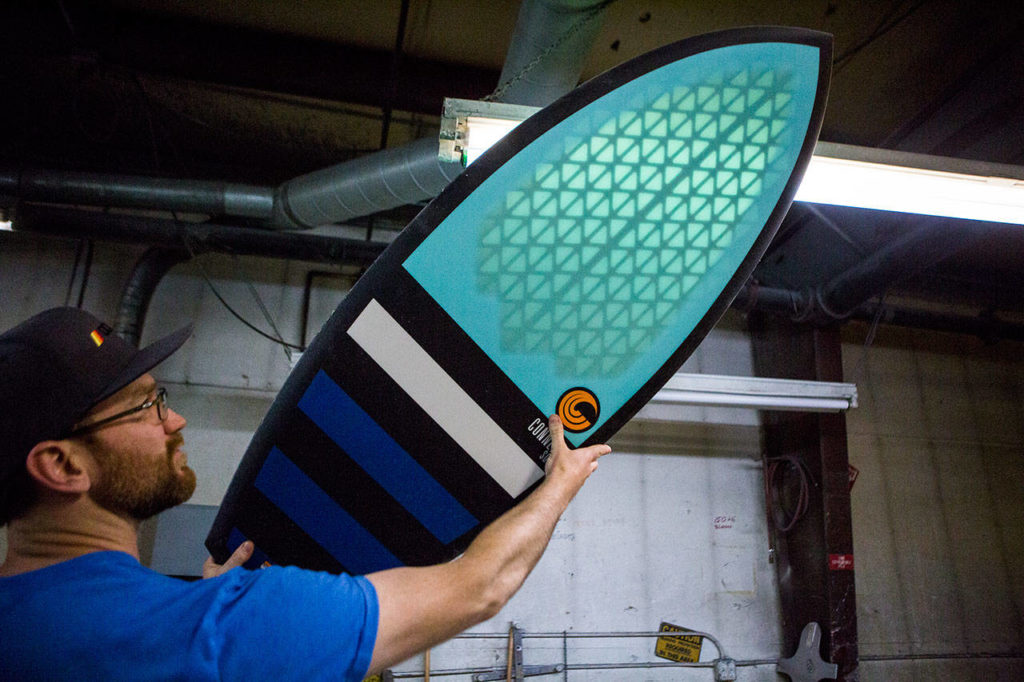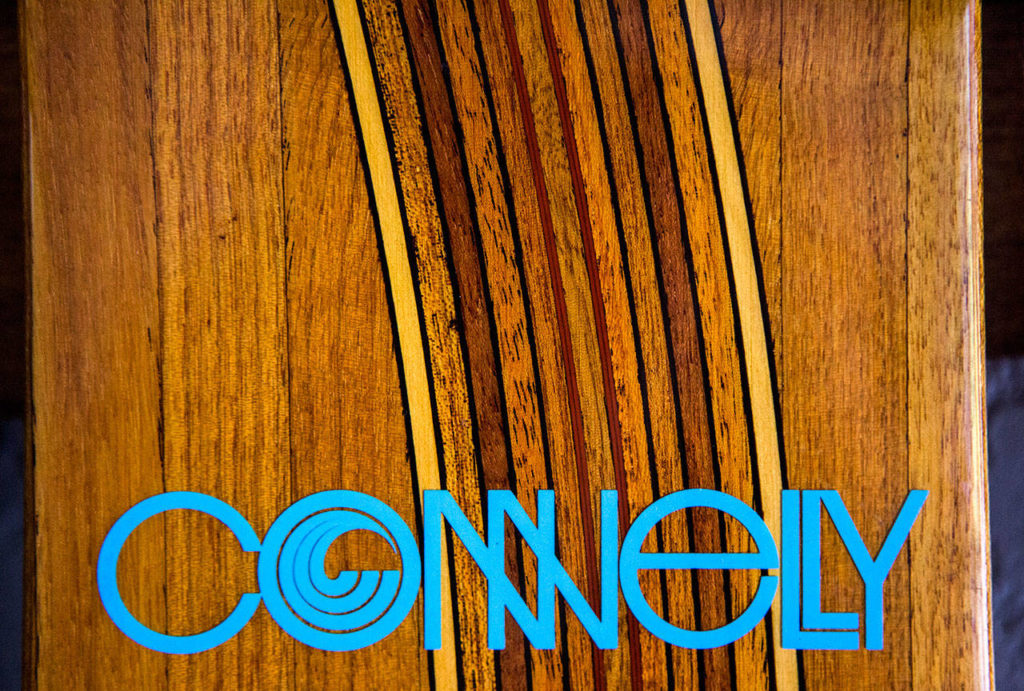This is one of a series of Herald Business Journal stories about the people and companies behind locally made products.
LYNNWOOD — Connelly Skis would like to provide distributors with a list of rock-solid prices for its new line of water sports equipment, but until the trade war between the U.S. and China is resolved, the numbers are fluid.
“At this point we’re starting to quote the prices of our 2020 product line, but there’s an asterisk — we’re telling people if we can’t honor the quote it’s because of higher tariffs,” said Jay Quam, the company’s vice president of marketing.
Connelly, which makes water skis, wakeboards and other water-sport products, is facing uncertainty like other U.S. manufacturers. Increased tariffs on fiberglass and other materials it buys would raise production costs.
Trade talks between the U.S. and China ended recently with no agreement, and the U.S. raised import tariffs on $200 billion of Chinese goods from 10% to 25%.
The Trump administration has said it’s prepared to extend tariffs to cover another $300 billion of goods. Tariffs, which are taxes paid by U.S. importers, are usually passed on to consumers or companies that depend on imported items. It’s hoped that trade talks will resume this summer.
Once a week — usually Wednesdays — Connelly Skis molds high-end water skis, wakeboards and wakesurf boards at its Lynnwood factory.
“We mold once a week and then finish, package and prep for the next mold,” Quam said.
The process sandwiches a foam core between layers of fiberglass or carbon fiber mesh, said Collin Spradlin, the company’s marketing manager.
A paper-thin graphic layer brands the board and also protects against heat and sun damage.
It’s then popped into a compression molding machine and baked at 180 degrees for 12 minutes. Workers then hand finish the board, an hour-long process, Spradlin said.
Connelly Skis was founded in 1965 inside a garage in Seattle’s Lake City neighborhood.
In 1955, Chicago-native Pat Connelly who died in 2014, moved to Seattle to pursue his passion for skiing — on snow and water.
(Sorry, but it took a Midwesterner, Ralph Samuelson, to invent water skiing in 1922. Samuelson strapped boards to his feet and used a clothesline as a behind-the-boat tow rope on a Minnesota lake.)
By 1965, Connelly was making a few simple flat-bottomed water skis from mahogany and cedar.
“He would go down to Alki Beach and sell them out of the back of his van — people were buying them because they were beautiful works of art,” Quam said.
If you visit the Lynnwood factory, you can see examples of his curving-inlaid wooden skis, forms that would be at home in a sculpture garden.
In mid-1970s, Connelly moved from the garage to the company’s Lynnwood location at 20621 52nd Ave. W.
By that time, lighter and stronger fiberglass had begun to replace wooden skis.
“Connelly Skis eventually went from a local brand to a global brand,” Quam said.
Its products are available at national chains like Dick’s Sporting Goods and independents such as Wiley’s Watersports in Seattle.
In the mid-1990s, the company began producing water skis to fit different-sized skiers, and began making wakeboards and wakesurf boards.
Wakeboards, a cross between a water ski and a surf board, emerged in the mid-1980s, followed by wakesurfing.
Here’s the difference: In wakeboarding, a rider is towed behind a boat traveling about 10 mph. Wakesurfing also involves a boat and tow rope, but once a rider catches the boat’s wake, he or she drops the rope.
In recent years, Connelly Skis has begun focusing on water sports “that everyone can do,” Quam said.
That includes inner tubes that can fit one to six riders, floats for the pool and tow tubes.
“Higher-end slalom skis are a tougher market,” Quam said.
Wakeboards sell from about $300 to $800. High-end slalom skis range from about $350 to $1,700, he said.
Connelly, which employs about 40 in the Puget Sound area, also keeps a few professional water skiers, most of them based in Florida, on salary to test the pro-level skis.
New, recreational water sport designs get a try-out at the local pond. “That’s what I’m doing this weekend,” said Spradlin.”Going to Lake Washington.”
As for trade talks and tariffs, “We can only wait and see,” Quam said.
Janice Podsada; jpodsada@heraldnet.com; 425-339-3097; Twitter: JanicePods
Talk to us
> Give us your news tips.
> Send us a letter to the editor.
> More Herald contact information.


